Sumge Mani is also known as “Songge Mani-Sutra City” or “Sumge Mani Stone Castle“
This is a large complex built entirely out of “mani stones” (stones inscribed with Buddhist sutras). Due to the vast openness of the surrounding grasslands, the stone-city does not appear grand or tall from a distance.
The location of the stone castle is called “Song” in the Tibetan language, hence the local people refer to it as “Songge Mani” (“Ge” is a particle without meaning).
The stone castle is oriented facing south, and the entire city is rectangular in shape. It is 73 meters long from east to west, and 47 meters wide from north to south. The outer walls are approximately 9 meters high, while the central stupa section reaches the highest point at 14.5 meters.
According to historical research, the stone castle is believed to have been built between the 11th and 12th centuries, covering an area of about 4,000 square meters. It is entirely constructed of mani stones with inscribed scriptures, without the use of any adhesives or supporting frameworks.
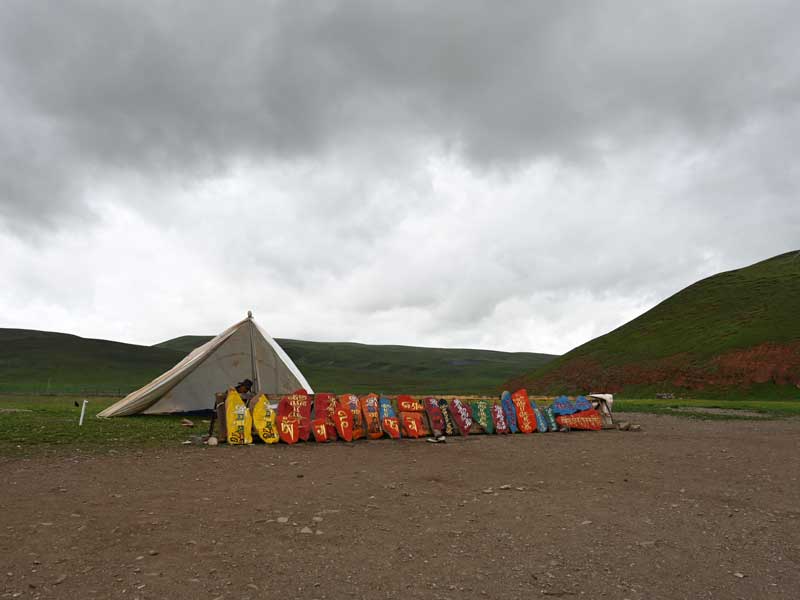
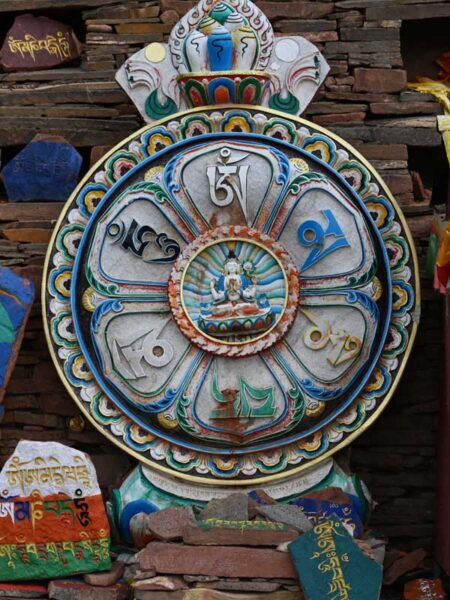
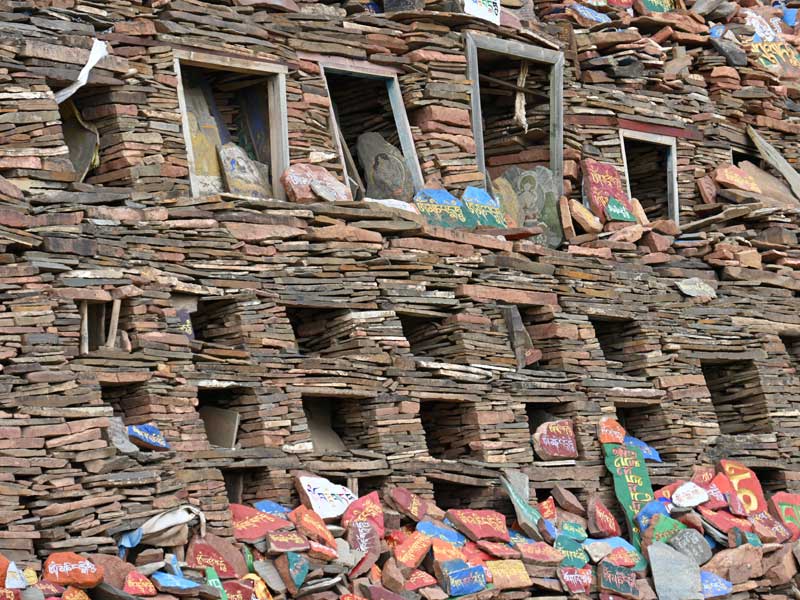
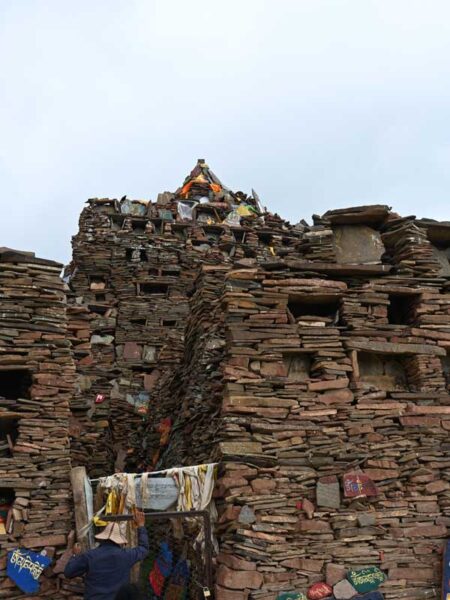
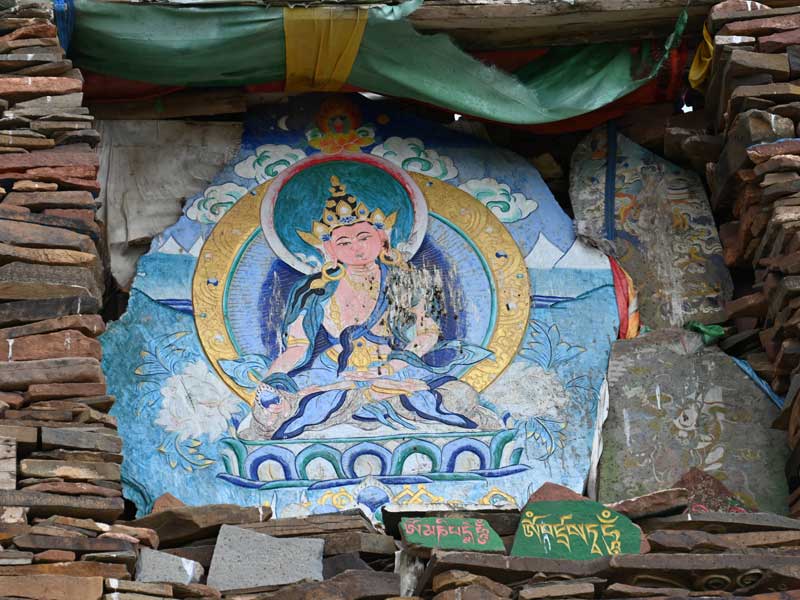
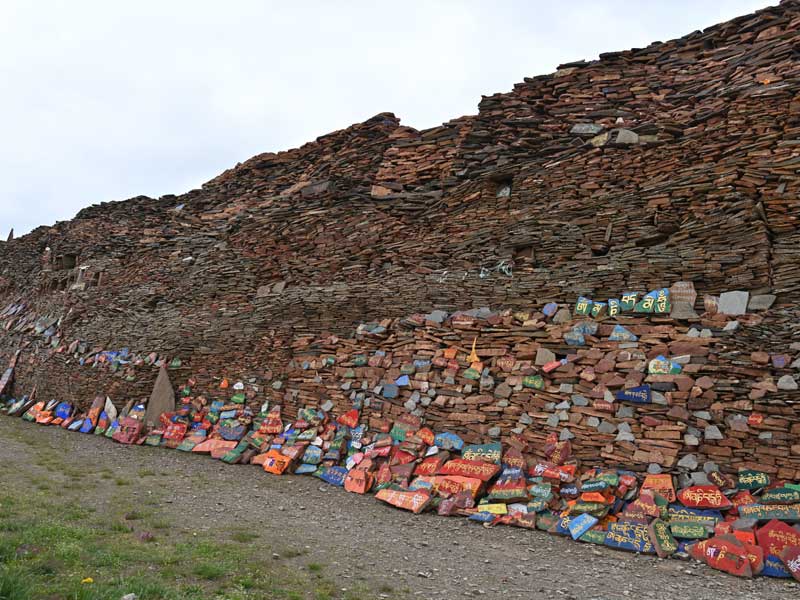
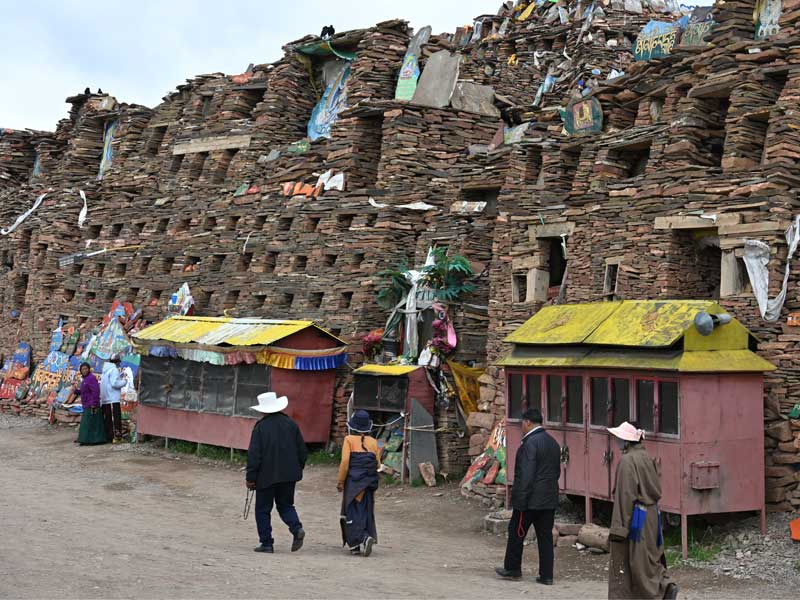
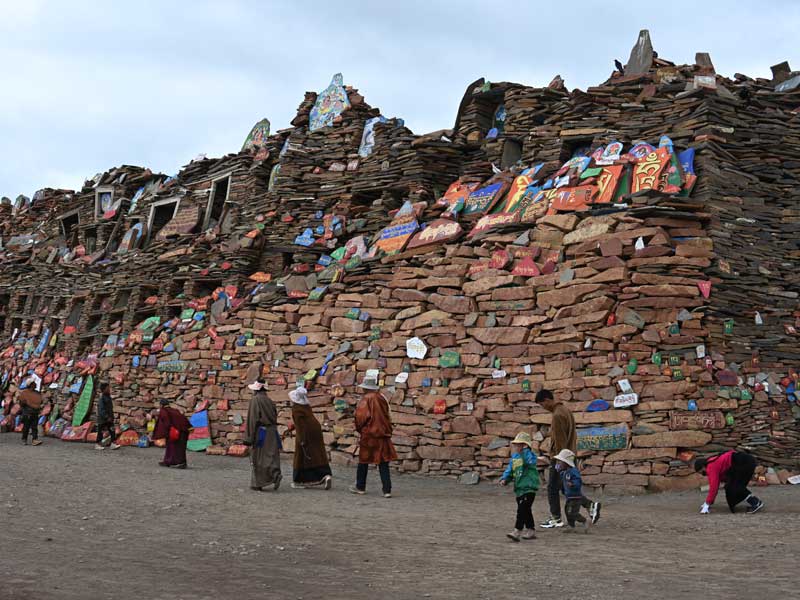
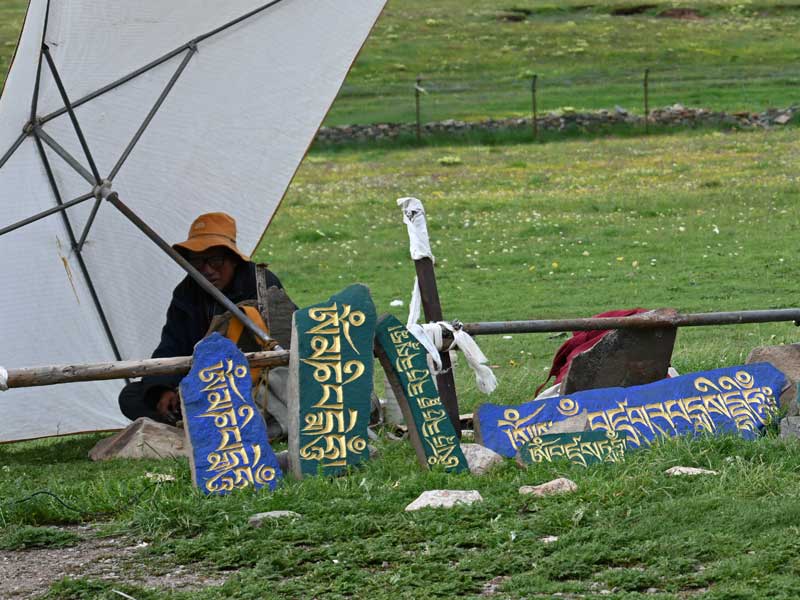
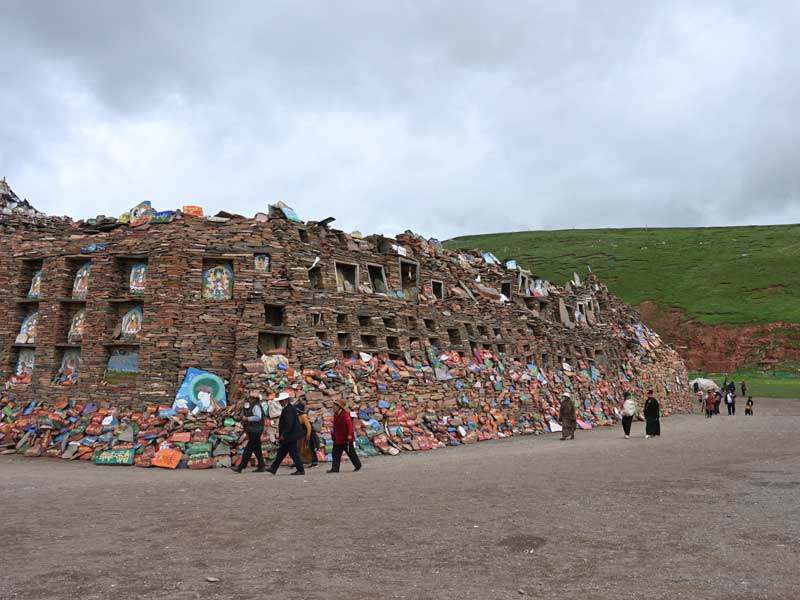
Location
Sumge Mani Stone Castle is located about 70 kilometers northeast of Shiqu (Sershul) County in Arizha Township.
It is situated on the western bank of the Luoqu River, a tributary of the Yalong River, between two mountains in a wide valley. It is built at the foot of a low hill, with the open grasslands in front and a gently sloping, rounded hill further away. The surrounding terrain offers both a sense of shelter and openness.
Architecture
The outer walls of the stone castle are lined with rows of densely packed niches that look like countless “windows.”
Most of these niches house finely carved and colorfully painted stone statues of Buddhas and deities. There are both bas-relief and line carvings, with exceptionally intricate techniques. The statues vary in type and appearance, each with unique expressions and postures.
Many of the stone carvings have weathered over time, with their colors fading, giving them an ancient look.
According to field surveys, there are 383 niches on the outer walls of the stone castle alone, including 204 on the front wall, 68 on the east wall, 62 on the west wall, and 49 on the back wall.
A small gate, located slightly to the west on the front side, provides access to the interior of the stone castle.
Inside, the stone castle is densely packed with piles of mani stones inscribed with various scriptures and images of Buddhas, leaving only narrow passageways for movement. These paths twist and turn between the high walls of mani stones, leading one left, right, up, and down, creating a labyrinth-like experience for those walking within.
On the eastern side of the castle, there is a stupa built from mani stones, standing about 5-6 meters tall.
The most mysterious part of the castle is a well-like structure made of five concentric stone circles, stacked on top of each other.
This well is located at the lowest point inside the castle, approximately level with the ground. It is said that this well marks the center of the castle and is considered the “heart” of the entire structure.
On top of the five stone circles lies a mani stone. When the mani stone is lifted, a well opening is revealed in the center of the stone circles.
According to local residents, the well is bottomless, and when one leans over and listens carefully, they can hear the sound of flowing river water, the sounds of temple horns and drums, or even the thunderous gallop of warhorses. Everyone hears something different.
When we leaned over and listened for a while, there was a clear sense of emptiness below, and a cool breeze rose gently from the well. From these observations, it seems that there is a large space beneath the well, possibly very deep.
Thus, the various sounds people hear inside the well may stem from a subjective illusion triggered by the sense of “emptiness.” This could explain why different individuals hear different sounds.
However, what is the purpose of this mysterious well? How was it formed? Is it related to the construction of the stone castle? Local people have no answers to these questions.
But based on the sense of emptiness felt in the well at the center of the castle, the labyrinth-like passageways, and the overall layout of the stone castle, it seems unlikely that this structure was randomly built. It is highly probable that there was some form of design and planning involved from the very beginning.
The interior of the stone castle is also filled with countless niches, all housing exquisitely carved stone statues of Buddhas in various forms and expressions.
Verification of the Construction Period
There are many theories about the construction period and origin of the Sumge Mani Stone Castle, with two particularly noteworthy ones:
The first theory is a widely circulated local legend in the Arizha Township area, where the stone castle is located. It suggests that during the time of King Gesar, his army engaged in a major battle with enemy tribes in this region. Many soldiers were killed in the battle, and in order to perform rituals to guide the spirits of the fallen, the soldiers built a mani stone mound here.
Over time, as local people came to commemorate King Gesar’s achievements, more and more people made pilgrimages to this site, gradually enlarging the mani mound until it eventually became the Sumge Mani Stone Castle.
Supporting this theory is the discovery of over 30 colorfully painted stone statues of King Gesar and his 30 generals in a niche at the center of the front of the stone castle. This seems to suggest a certain connection between the castle and King Gesar.
The Shiqu grassland was once one of King Gesar’s strongholds, and even today, many legends about King Gesar and the relics of his activities are still passed down in the Shiqu grassland area.
Many scholars in Gesar studies believe that King Gesar of the Ling Kingdom is based on the Ling family clan of the 11th-12th centuries, who lived in what is now Dege and Shiqu in Sichuan (the ancestors of the Tusi leaders in Dege). Scholars in Gesar studies regard Jisuyagekanduo in the Ashu Township of Dege County in Ganzi Prefecture, Sichuan, as the “hometown of King Gesar” (where a temple dedicated to King Gesar and various relics of his activities are found).
The Ashu grassland in Dege is adjacent to Shiqu, and the Zhaxika grassland in Shiqu was one of King Gesar’s early major activity areas.
King Gesar is believed to have been a descendant of the Ling family clan, around the 30th generation, and he lived around the 11th-12th centuries, corresponding to the Song dynasty in central China.
If the origin of Sumge Mani Stone Castle is indeed as the local legend describes, then the stone castle would have been built nearly a thousand years ago.
The second theory comes from the staff at the local cultural heritage management department. A few years ago, Shiqu County’s cultural relics department excavated a 1.5-meter-deep trench near the base of the stone castle wall and discovered that the mani stones beneath were inscribed with Sanskrit scriptures.
Sanskrit was primarily popular during the Early Propagation period of Buddhism in Tibet, during the Tibetan Empire. After King Langdarma’s persecution of Buddhism in 842 CE, Buddhist practitioners migrated from Ü-Tsang to border regions like Kham. Around a century later, by the late 10th century, the Lower Road route of the propagation of Buddhism from Kham to Ü-Tsang began to flourish. At that time, the area along the banks of the Jinsha River, including counties like Shiqu, Dege, and Baiyu, became a core region for this propagation.
Many founding masters of the Kagyu and Nyingma schools of Tibetan Buddhism, such as Düsum Khyenpa (the founder of the Karma Kagyu), Rinchen Pal (founder of the Drikung Kagyu), Phagmo Drupa (founder of the Phagmo Kagyu), and Kadampa Desi (founder of Katok Monastery in the Nyingma tradition), all came from the area along the banks of the Jinsha River, including Shiqu, Dege, and Baiyu.
The discovery of Sanskrit inscriptions at the base of the stone castle walls, combined with the fact that Shiqu was located in the core region of the Lower Road propagation, suggests that the stone castle was likely built in the 11th-12th centuries. Notably, this period coincides with the time when the Ling family clan, the prototype of King Gesar, was active. This implies that the clues provided by both the Gesar legend and the Sanskrit inscriptions regarding the origin of Sumge Mani Stone Castle are roughly aligned.
Additionally, some weathered inscriptions with Bön symbols (Yungdrung) were also found near the base of the walls. This indicates that during the early construction of the stone castle, the Bön religion still held considerable influence in the area.
The Legend of the Sumge Mani Stone Castle
According to local residents, the Sumge Mani Stone Castle never grows taller—however tall it stands above ground, it is said to have an equal portion submerged underground.
This means that the visible part of the Sumge Mani Stone Castle is only half of it, while the other half is buried below the surface.
Although this claim has yet to be verified, some signs suggest it could be possible.
First, the groundwater level on the grasslands is generally high, and the soil is soft. Observations of the stone castle’s foundation indicate obvious signs of sinking. Local people say that every year, in the first month of the Tibetan lunar calendar, a red clay seeps out from the castle’s walls, which they consider auspicious and use for healing.
The seeping clay is likely a result of the pressure from the castle sinking, proving that the stone castle does indeed sink a little each year, especially during the winter months.
Secondly, the dampness and sense of emptiness felt from the well in the castle’s center indicate that the ground below is soft and moist. It’s easy to imagine that such a soft, moist foundation would have limited load-bearing capacity.
Therefore, it’s entirely plausible that the Sumge Mani Stone Castle is sinking because the mani stone construction has grown too tall, and the ground can no longer support the weight.
The Sumge Mani Stone Castle is a “living” castle. Since its creation, the construction has never stopped. Each year, countless new mani stones are added to the structure. Remarkably, even during the Cultural Revolution, the castle was untouched due to its remote location, and the building of mani stone mounds continued uninterrupted.
Mani Stone Carvings
Mani stone carving is a unique form of folk culture in Tibetan areas with ancient origins. It is closely linked to the early stone worship of Tibet’s ancestors and the Bön religion that existed before Buddhism was introduced.
Though mani stone carvings are now somewhat connected to monastic culture, they primarily belong to a system of folk belief, serving as a way for the Tibetan farmers and herders—who live in harsh environments—to express their faith more freely.
Especially in the vast grasslands where temples are scarce and distant, mani stone carvings have become a primary means for nomadic people to practice and express their beliefs.
Mani stone carving culture is highly developed in Shiqu (Sershul) County, as well as in the neighboring areas of Yushu in Qinghai, northern Chamdo in Tibet, and the broader nomadic regions of northern Tibet.
In particular, the mani stone carvings in the Chamdo and northern Tibetan regions are ancient, with some possibly dating back to the time of the Tibetan Empire. The size and scale of some of the mani stone mounds are immense.
The Sumge Mani Stone Castle is likely the only and largest stone scripture castle of its kind seen across the entire Tibetan plateau.
Stone Carving Culture
In terms of the variety and craftsmanship of the painted stone Buddha statues within the niches, Sumge Mani Stone Castle can be described as an art museum of stone carvings on the grasslands.
It not only features a unique structure, delicate layout, and grand scale, but also showcases exquisite carving techniques. The castle holds immense value for studying ethnic history, architecture, and Gesar culture.
Despite enduring for a thousand years, this stone scripture castle—entirely built from stone—still stands tall, embodying the unique charm of Tibetan culture.



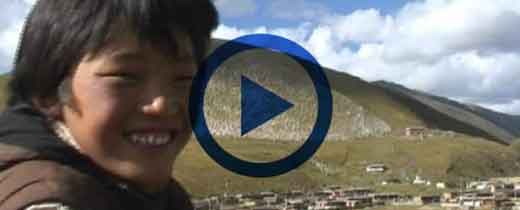

Leave a Reply